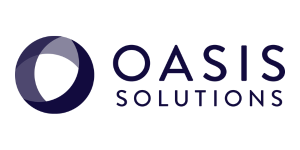An integrated payroll/HRMS (Human Resource Management Software) solution offers enormous advantages over two separate or interfaced systems. Sharing a combined payroll/HRMS database does not mean that one department or the other takes control. It is up to your organization to determine which individuals perform which functions. Advanced security options control individual access. For example, the HR department may not be given access to process payroll; the payroll department may not be allowed to see disciplinary notes. However, there are many benefits to a combined system including the following:
- Valid HRMS Data: An HRMS running as an island does not undergo the same scrutiny that an HRMS tied to payroll undergoes. Why? In most companies an accurate paycheck is given a higher priority than accurate management reports. Payroll can't be wrong. If it is, your "employee auditors" will let you know quickly. Payroll professionals have been trained to ensure that the proper controls and audits are in place to ensure a high degree of accuracy. With payroll tied to your HRMS, errors in salaries or benefits generally surface immediately. To the contrary, if this type of information is entered incorrectly in your "HRMS island", how will you know? The fact is, you may never now. The integrated approach ensures that your HRMS has valid data that can be relied upon to make strategic business decisions. Integration can breathe new life into an HRMS that have become stale due to the lack of audit and control measures.
- Integrated Reporting: True compensation history is critical to HR. If this data resides outside of the HRMS, consolidated reporting is impossible without complex import/export processes. Let's say HR needs a report outlining each employee's "total compensation package". This report must contain benefit data from the HRMS and compensation data including regular, overtime, vacation, bonus, commission, etc. from payroll. You can only create this type of consolidated report with an integrated solution.
- Reduce Paper Flow: With payroll and HR data stored in the same database you can reduce unnecessary paper flow. For example, if HR enters a new benefit for an employee, the deduction amount is automatically established as part of the benefit plan. There is no need to submit a paper document to the payroll department.
- Reduced Expense: It doesn't make sense to do the same thing twice. At first glance it may not appear that maintaining two separate databases is very expensive. However, consider all of the paper shuffling, training for separate user interfaces, training for separate report writers and errors that have to be corrected in two places. To truly maintain a stand-alone HRMS at the same level of integrity as payroll is very expensive.
If you need more information about how Payroll and/or HRMS solutions can help your organization, contact Christine Ashley 502-429-6902 ext 236 or christine@oasisky.com. Oasis Solutions Group provides stand alone and integrated HR, payroll, accounting, ERP and CRM software. Visit Oasis to learn more.


